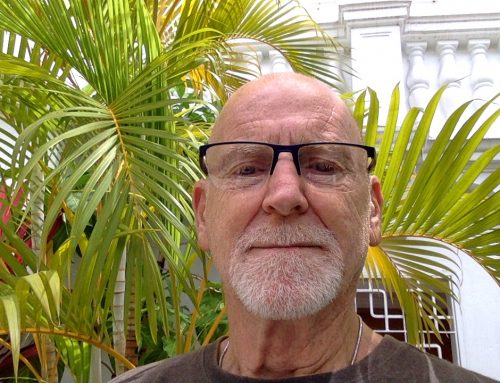The Day I Told an Entire Country That I Have an Eating Disorder
By Kira McCarthy
Eating Disorders have the highest mortality rate of any psychiatric disorder. They also have the biggest stigma.
Eating Disorders (ED’s) are misunderstood, not talked about, and extremely dangerous. What makes them so dangerous is the silence. Too many people, including medical professionals, have a serious lack of understanding about the causes, symptoms, behaviours, and internal struggles when it comes to this illness. There is a myth that having an ED is about taking a diet too far. As if it is entirely about beauty, sexuality, and something you choose. No one chooses to be sick.
It took me 17 years to discover that I am a lesbian. It took me 30 years to discover that I have an Eating Disorder. There is less stigma associated with being LGBTQ, than there is associated with EDs. “Coming Out” as a lesbian was easy. “Coming Out” with ED is terrifying.
4 years ago, I walked into an incredible agency called Sheena’s Place (SP). The thing that makes SP so unique is that the services are free, and you do not require a diagnosis or referral from a doctor for access. SP is welcoming for people of all genders and abilities and provides support, skills building groups, workshops, and education. At the time, however, I did not fully want to be there. I wasn’t ready to accept that my disordered eating was problematic or dangerous. That’s when Deborah Berlin-Romalis changed my life. So when she asked me if I would be interviewed by the media, I said yes.
I knew that this interview would be challenging. I knew that opening up about my experiences with such a stigmatized illness would be hard. What I didn’t know was how vulnerable it would make me, or how I would be opening myself up to an entire country on their nightly national news broadcast.
In my first Skills Building Group at SP, Berlin-Romalis taught me about the cycle of shame, my need to give myself love, my need to live on more than crumbs, and about the need to trust my own thoughts and feelings. This eye-opening experience left me with more questions than answers and I began attending at least one group every seasonal session. It took time for me to settle in at the SP house. I was embarrassed to be there. Embarrassed that even other clients with similar experiences knew why I was there. I felt uncomfortable even going into the kitchen to make myself a cup of tea. I felt like I wasn’t even deserving of that one little act of self-care.
Through my skills building groups at SP and my own work on my personal growth, SP has become one of my safe spaces. I don’t only make myself a big mug of tea, I also take my shoes off and get cozy the couch. Seriously though, SP changed the way I think about what I deserve in life, what it is my right to demand, and how I can work to take my life back from this illness.
In 2015, I started an Art Business that raises money for SP. It began with a colouring book and has grown to canvas prints, greeting cards, magnets, posters, framed paintings, and calendars. I have an online following and love to meet strangers who have seen my work, have connected with it, and have come to visit me at shows and sales.
Sheena’s Place relies entirely on donations and has no government funding. Keeping their doors open is a huge undertaking.
On Friday, July 14, 2017, a news piece aired that discussed EDs and the new Netflix film To The Bone. My family has no knowledge of my history or my struggling with disordered eating. That is how sneaky and manipulative this illness is. I have managed to keep a deadly psychiatric illness from my parents and family for more than 30 years. I kept the behaviours, the symptoms, and the dangerous results a secret. I have been severely malnourished for so many years. But I “don’t look sick.” I do not fit the media image that is portrayed and focused on. I am not an emaciated young white girl that falls into what doctors would consider a dangerously low BMI. This is my biggest critique of the Netflix film. While it opens up a crucial dialogue about EDs and the importance of treatment, it reinforces the stereotype of what it means to be “sick enough”, what a person with an ED looks like, and what type of person needs treatment.
My choice to be interviewed for National Television about the most private part of my life was not an easy one. I also had very little time to make the decision. I have no idea how many people I know saw the piece. Or how many times the piece will be shared and re-shared on social media. I was encouraged to do it for reasons of self-disclosure, to put an end to toxic secrets, to speak my truth, and to advocate for those who are unable to speak for themselves.
My choice to go through this vulnerability was not so much about myself, however. My hope is that people see the news piece and decide to donate money to SP, so that they can keep their services running. I hope that people begin to talk about EDs as the psychiatric illness that it is and how it can affect anyone at any stage of life.
My dream is that one person sees the interview and learns that Sheena’s Place exists. My hope is that, however they identify, they make that first phone call to SP, or look at their website, or send an email. If only one person receives support because I used my voice, then the fear and rawness I have experienced by opening myself up like this are absolutely worth it.









Leave A Comment